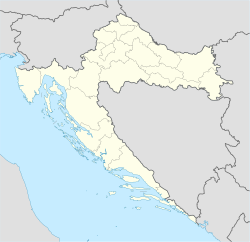History
Due to its geographical placement, Korita held strategic value for observing the Mljet Channel and the adjacent open sea. Throughout history, Korita was one of the larger settlements on the island. [5]
The village of Korita came into existence during the 15th century, following the destruction of Okuklje and people moving from Žara. [5]
A tower that stands in the middle of the village was originally built to defend against pirate attacks. Throughout the 17th and 18th centuries, the residents focused on fishing, particularly catching and selling salted sardines, which brought considerable wealth to the area. During this time, nobles from Dubrovnik, Ston, and other regions settled in Korita, giving it the characteristics of a more urban settlement. [5]
The sudden vanishing of sardines late in the 18th century caused Korita to fall into poverty. This led to many people leaving the village, and a subsequent plague caused many deaths. [5]
The long-term settlement of the town, as well as the island, is evidenced by the excavations of the church of St. Paul from the 5th century and the remains of a villa rustica from the 1st century. [6]
This page is based on this
Wikipedia article Text is available under the
CC BY-SA 4.0 license; additional terms may apply.
Images, videos and audio are available under their respective licenses.






